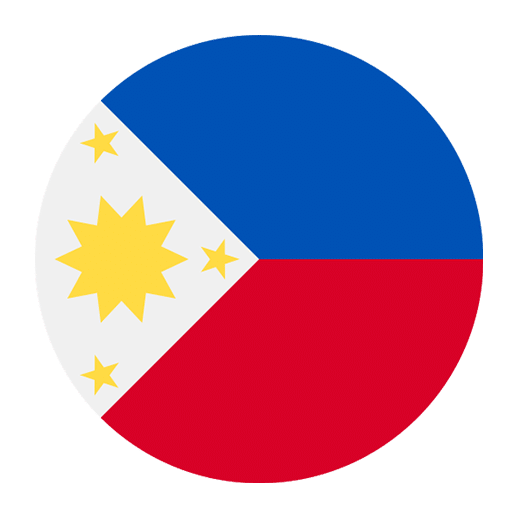Tagalog, also known as Filipino, is one of the major languages spoken in the Philippines. Learning Tagalog can be a rewarding endeavor, whether you are planning to visit the Philippines, have Filipino friends or family, or are simply interested in expanding your linguistic repertoire. Fortunately, the internet offers a plethora of resources that make learning Tagalog accessible and enjoyable. This article will guide you through some of the best online resources available for learning Tagalog, catering to various learning styles and preferences.
Language Learning Apps
1. Duolingo
Duolingo is a popular language-learning app known for its gamified approach to teaching languages. The app offers a Tagalog course that covers a range of vocabulary and grammar topics. Duolingo’s bite-sized lessons are perfect for learners who prefer a structured yet flexible learning experience. The app’s interactive exercises, such as matching words with pictures and filling in the blanks, make learning Tagalog fun and engaging.
2. Memrise
Memrise is another excellent language-learning app that uses spaced repetition to help you memorize vocabulary and phrases. The Tagalog course on Memrise includes audio recordings by native speakers, ensuring that you learn the correct pronunciation. Additionally, the app’s use of mnemonics helps reinforce your memory of new words and phrases.
3. Drops
Drops is a visually appealing language-learning app that focuses on vocabulary acquisition. The app’s Tagalog course includes a wide range of topics, from basic greetings to more advanced themes like travel and business. Drops uses interactive exercises and beautiful illustrations to make learning new words enjoyable. The app’s short, five-minute sessions are perfect for busy learners who want to practice Tagalog daily.
Online Courses and Websites
1. Pimsleur
Pimsleur is a renowned language-learning program that emphasizes listening and speaking skills. The Pimsleur Tagalog course consists of audio lessons that encourage active participation. Each lesson builds on the previous one, gradually increasing in complexity. The program’s focus on conversational skills makes it an excellent choice for learners who want to become proficient in speaking Tagalog.
2. Rosetta Stone
Rosetta Stone is a well-established language-learning platform that uses an immersive approach to teaching languages. The Tagalog course on Rosetta Stone includes interactive lessons that cover vocabulary, grammar, and pronunciation. The platform’s speech recognition technology helps you practice speaking Tagalog with correct pronunciation. Rosetta Stone’s comprehensive approach makes it suitable for learners of all levels.
3. Filipino101.com
Filipino101.com is a dedicated website for learning Tagalog. The site offers a variety of resources, including audio and video lessons, vocabulary lists, and grammar explanations. Filipino101.com also provides a learning community where you can interact with fellow learners and native speakers. The website’s structured courses and extensive resources make it a valuable tool for anyone serious about learning Tagalog.
YouTube Channels
1. Learn Tagalog with Fides
Learn Tagalog with Fides is a YouTube channel run by a native Filipino speaker. The channel offers a wide range of lessons, from basic vocabulary and phrases to more advanced grammar topics. Fides’ clear explanations and engaging teaching style make the lessons easy to follow. The channel also includes cultural insights, helping you gain a deeper understanding of Filipino culture.
2. Tagalog with Kirby
Tagalog with Kirby is another excellent YouTube channel for learning Tagalog. Kirby, a native speaker, provides comprehensive lessons that cover various aspects of the language, including pronunciation, vocabulary, and grammar. The channel’s interactive approach, with quizzes and practice exercises, helps reinforce your learning. Kirby’s friendly and approachable demeanor makes the learning process enjoyable.
3. FilipinoPod101
FilipinoPod101 is a YouTube channel that complements the Filipino101.com website. The channel offers a variety of video lessons, including vocabulary lists, grammar explanations, and cultural insights. The videos are presented by native speakers, ensuring accurate pronunciation and usage. FilipinoPod101’s engaging content and structured lessons make it a valuable resource for learning Tagalog.
Podcasts
1. Go Filipino: Let’s Learn Tagalog
Go Filipino: Let’s Learn Tagalog is a podcast hosted by Kris Andres, a native Filipino speaker. The podcast covers a range of topics, from basic vocabulary and phrases to more complex grammar concepts. Kris’ clear explanations and engaging teaching style make the lessons easy to follow. The podcast also includes cultural insights, helping you gain a deeper understanding of Filipino culture.
2. Tagalog.com Language Learning Podcast
The Tagalog.com Language Learning Podcast is an excellent resource for learners of all levels. The podcast features a variety of episodes, including vocabulary lessons, grammar explanations, and cultural discussions. The hosts, who are native speakers, provide clear and accurate explanations, making it easy to follow along. The podcast’s engaging content and structured lessons make it a valuable tool for learning Tagalog.
3. Learn Filipino with Podcast
Learn Filipino with Podcast is another great podcast for learning Tagalog. The podcast offers a range of episodes, from basic vocabulary and phrases to more advanced grammar topics. The hosts, who are native speakers, provide clear and accurate explanations, ensuring that you learn the correct pronunciation and usage. The podcast’s engaging content and interactive approach make it a valuable resource for learning Tagalog.
Social Media Groups and Forums
1. Reddit (r/Tagalog)
Reddit’s r/Tagalog community is a valuable resource for learners of all levels. The subreddit features discussions on various topics, including vocabulary, grammar, and cultural insights. Members of the community, including native speakers, are often willing to answer questions and provide feedback. The subreddit also includes links to additional resources, making it a comprehensive tool for learning Tagalog.
2. Facebook Groups
Facebook groups dedicated to learning Tagalog can be a great way to connect with other learners and native speakers. Groups like “Learn Tagalog/Filipino Language” and “Tagalog Learners” offer a platform for asking questions, sharing resources, and practicing your language skills. The supportive and interactive nature of these groups can enhance your learning experience.
3. Language Exchange Platforms
Language exchange platforms like Tandem and HelloTalk allow you to connect with native Tagalog speakers who are learning English. These platforms provide an opportunity for language exchange, where you can practice speaking Tagalog while helping your partner with English. The interactive nature of language exchange platforms makes them an effective way to improve your conversational skills.
Online Dictionaries and Translation Tools
1. Tagalog.com
Tagalog.com is a comprehensive online dictionary that includes a wide range of vocabulary, from basic words to more advanced terms. The site also offers example sentences, audio recordings, and grammar explanations, making it a valuable tool for learners. The interactive nature of the dictionary, with links to related words and phrases, enhances the learning experience.
2. Google Translate
Google Translate is a widely used translation tool that supports Tagalog. While not always perfect, Google Translate can be a useful resource for translating words and phrases. The tool also includes audio pronunciations, helping you learn the correct pronunciation of new words. However, it’s important to use Google Translate with caution, as it may not always provide accurate translations for complex sentences.
3. Forvo
Forvo is an online pronunciation dictionary that includes audio recordings by native speakers. The site allows you to search for Tagalog words and listen to their correct pronunciation. Forvo’s extensive database of words and phrases makes it a valuable resource for learners who want to improve their pronunciation skills.
Books and E-books
1. “Elementary Tagalog: Tara, Mag-Tagalog Tayo!” by Jiedson R. Domigpe and Nenita Pambid Domingo
“Elementary Tagalog: Tara, Mag-Tagalog Tayo!” is a comprehensive textbook designed for beginners. The book includes lessons on vocabulary, grammar, and pronunciation, as well as cultural insights. The accompanying audio recordings by native speakers help reinforce your learning. The structured approach and extensive content make this book a valuable resource for serious learners.
2. “Complete Filipino (Tagalog): A Teach Yourself Guide” by Cynthia O. De Castro and Julita R. De Leon
“Complete Filipino (Tagalog): A Teach Yourself Guide” is another excellent resource for beginners. The book includes a range of lessons, from basic vocabulary and phrases to more advanced grammar topics. The accompanying audio recordings by native speakers ensure that you learn the correct pronunciation. The book’s clear explanations and structured approach make it suitable for self-study.
3. “Tagalog for Beginners: An Introduction to Filipino, the National Language of the Philippines” by Joi Barrios
“Tagalog for Beginners” is a user-friendly book designed for learners with no prior knowledge of Tagalog. The book includes lessons on vocabulary, grammar, and pronunciation, as well as cultural insights. The accompanying audio recordings by native speakers help reinforce your learning. The book’s engaging content and interactive exercises make it a valuable resource for beginners.
Language Learning Communities
1. iTalki
iTalki is a language-learning platform that connects you with native Tagalog tutors for one-on-one lessons. The platform allows you to choose from a range of tutors based on their experience, teaching style, and hourly rate. The personalized nature of iTalki lessons makes it an effective way to improve your Tagalog skills. Additionally, the platform’s community features, such as forums and language exchange partners, provide additional opportunities for practice.
2. Preply
Preply is another platform that offers personalized language lessons with native Tagalog tutors. The platform allows you to choose from a range of tutors based on their experience, teaching style, and hourly rate. Preply’s interactive lessons and personalized approach make it a valuable resource for learners who want to improve their Tagalog skills.
3. ConversationExchange.com
ConversationExchange.com is a language exchange platform that allows you to connect with native Tagalog speakers for language exchange. The platform provides an opportunity for you to practice speaking Tagalog while helping your partner with English. The interactive nature of language exchange makes it an effective way to improve your conversational skills and gain cultural insights.
Language Learning Blogs
1. Fluent in 3 Months
Fluent in 3 Months is a popular language-learning blog run by Benny Lewis. The blog includes a range of articles on language learning strategies, tips, and resources. While not specific to Tagalog, the blog’s general language-learning advice can be applied to learning Tagalog. The blog also includes success stories and interviews with polyglots, providing motivation and inspiration for learners.
2. Omniglot
Omniglot is a comprehensive language-learning blog that includes information on a wide range of languages, including Tagalog. The site includes resources such as vocabulary lists, grammar explanations, and links to additional resources. Omniglot’s extensive content and structured approach make it a valuable tool for learners of all levels.
3. Tagalog Basics
Tagalog Basics is a dedicated blog for learning Tagalog. The blog includes lessons on vocabulary, grammar, and pronunciation, as well as cultural insights. The site also offers resources such as flashcards and quizzes to help reinforce your learning. Tagalog Basics’ comprehensive content and interactive approach make it a valuable resource for learners.
Conclusion
Learning Tagalog can be a rewarding and enriching experience, and the internet offers a wealth of resources to help you achieve your language-learning goals. Whether you prefer language-learning apps, online courses, YouTube channels, podcasts, social media groups, or books, there is something for everyone. By exploring and utilizing these resources, you can make your Tagalog learning journey enjoyable and effective. Happy learning!

